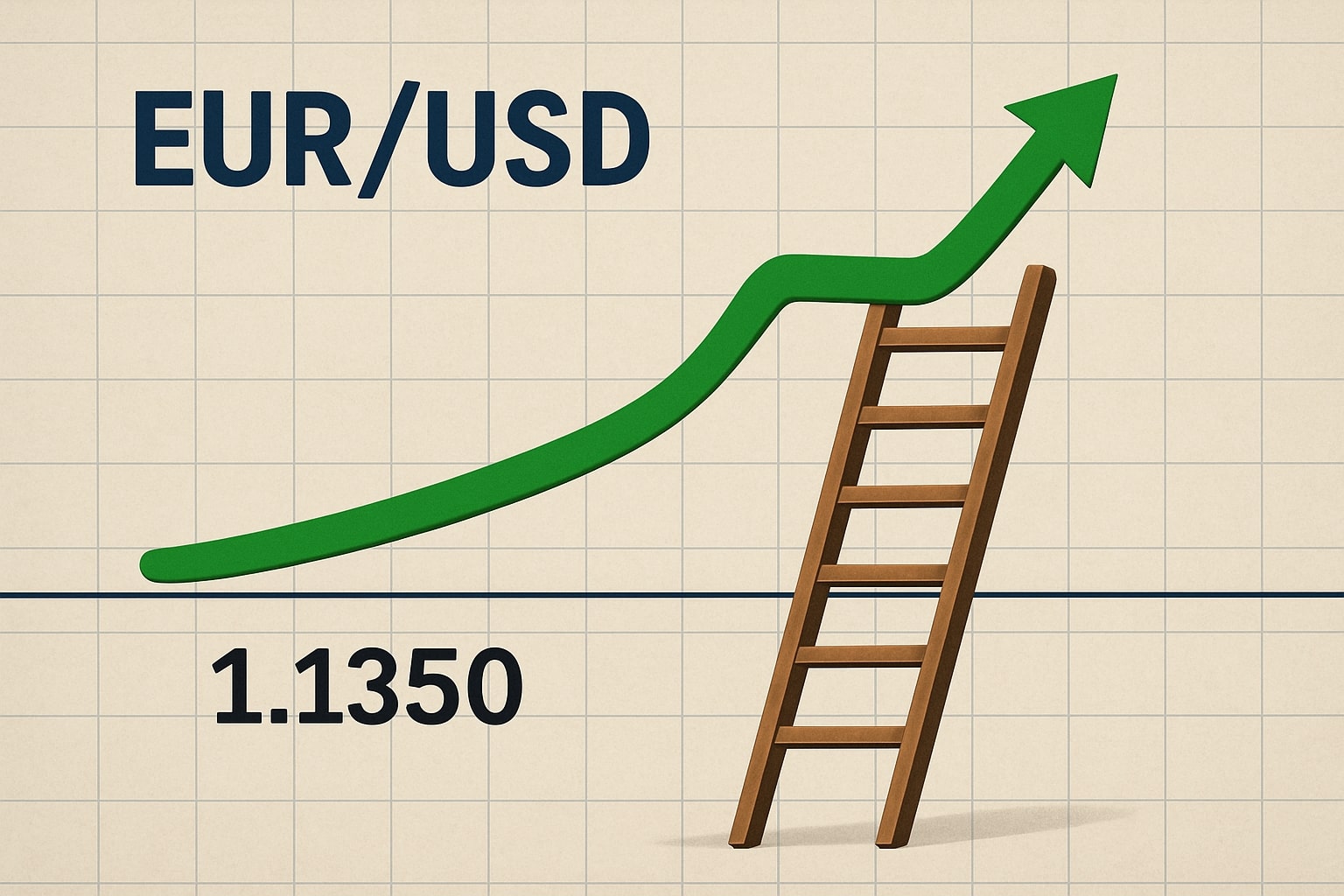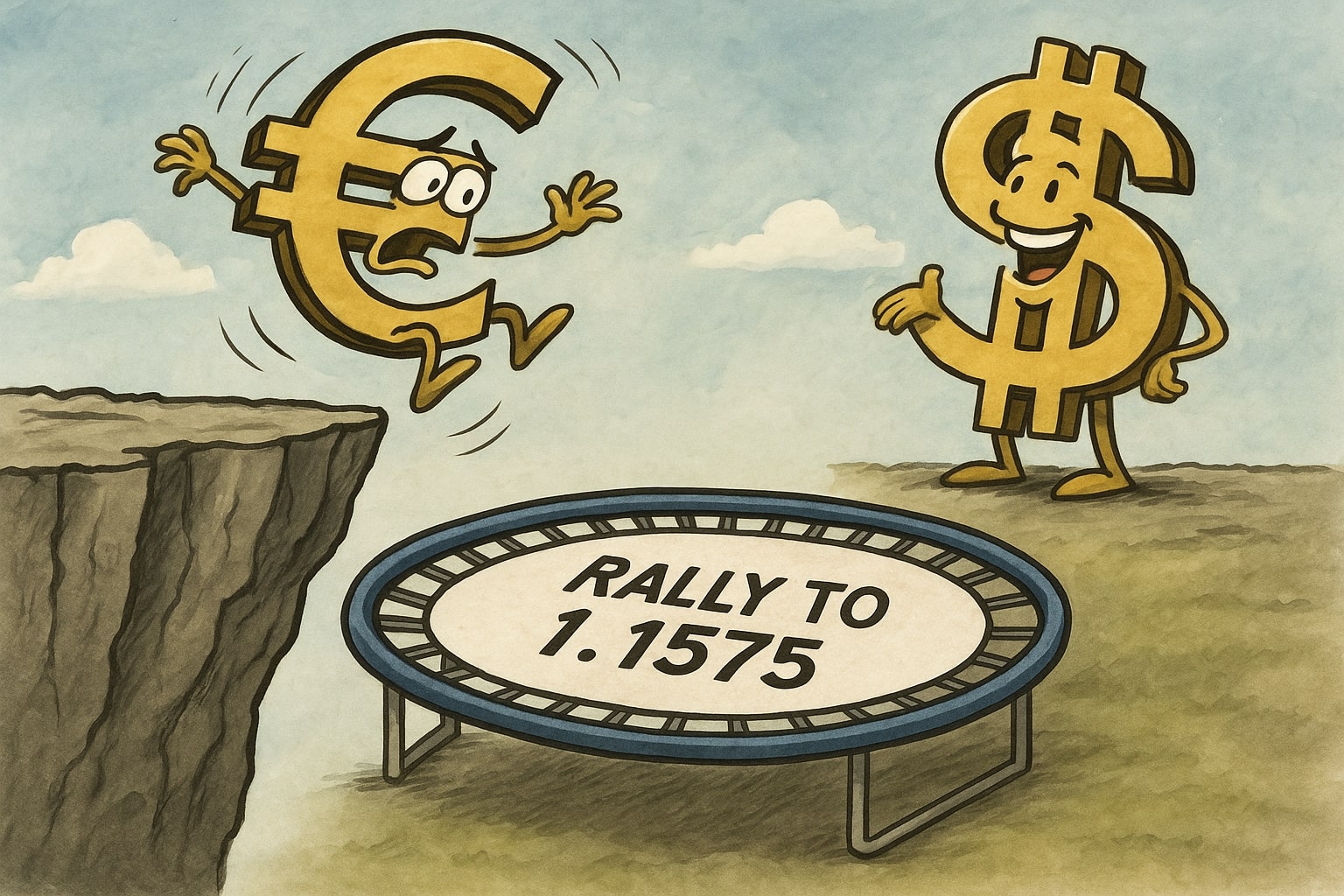EUR/USD Extends Rally Above 1.13 as Tariff Fears and PMI Data Recalibrate Dollar Demand
Can EUR/USD Maintain Momentum Toward 1.16 or Is a Deeper Pullback to 1.12 Looming?
A powerful shift in global trade rhetoric and softer U.S. PMI readings have sent the euro sharply higher against the dollar this month. EUR/USD surged from a two-month trough near 1.0200 in late January to trade above 1.1350 in early Asian hours. Sluggish U.S. services growth and renewed talk of easing transatlantic levies undermined greenback demand, while Europe’s more resilient activity profile offered the euro fresh support. Technical signals now suggest the pair may pause near 1.1375–1.1390 before deciding whether to aim for 1.1573 or retreat toward 1.1200.
Trade Policy U-Turn Unleashes Euro Strength
The first weekend of February saw President Trump’s administration label existing 145% U.S. tariffs on Chinese goods as “unsustainable,” a remark that reverberated across G10 FX markets. Initially dollar-positive—investors feared tighter trade barriers—subsequent comments from Treasury Secretary Scott Bessent, who described reciprocal duties as incompatible with growth, flipped the narrative. By April, tariff de-escalation talk became a USD-negative factor, prompting EUR/USD to rally over 600 pips in two weeks. From 1.0500 on March 1 to a peak of 1.0943 on March 31, the euro chalked up one of its most explosive March breakouts in years.
Services PMI Slump Turns Fed Rate Cut Odds in Euro’s Favor
April’s flash S&P Global Services PMI plunged to 51.4 from 54.4 in March, dragging the Composite reading down to 51.2. The weakness in services, which accounts for nearly 70% of U.S. GDP, has amplified market expectations for a June Fed rate cut. At press time, traders assigned a 60% probability to a first quarter‐point reduction, down from near zero in January. As U.S. rate-cut bets rise, EUR/USD capitalizes on the yield differential narrowing—the dollar’s recent bounce to 1.0611 in December gave way to fresh euro strength once recession fears took hold in March.
Technical Landscape: Overbought Weekly RSI & Key Levels to Watch
The weekly RSI on EUR/USD just slid into overbought territory above 70—only the second instance since 2020. A read‐outlier in itself does not guarantee a reversal, but it warns that chasing the breakout above 1.1500 may be hazardous. Support clusters lie at 1.1275, coinciding with the 38.2% retracement of January’s decline, and at 1.1200, a former resistance zone in Q4 2024. On the upside, immediate supply shows at 1.1375–1.1390, with a clear break above 1.1573 needed to re-test the multi-year high last seen in November 2021.
Daily Chart Signals and Momentum Conundrum
EUR/USD has paused near the 1.1350 pivot established on April 21. The pair sits marginally beneath its nine-day exponential moving average at 1.1362, while the 20-day SMA at 1.1195 provides a firmer floor. The MACD histogram retains positive territory, yet the Ultimate Oscillator has flattened, signaling that bulls must defend current levels or risk a deeper pullback toward the 50-day SMA at 1.0944. Intraday traders will eye the 1.1320 zone for signs of fresh buying interest; a violation there could expose 1.1264—last week’s swing low—before the door opens to 1.1200.
Macro Crosswinds: USD/JPY, Gold, Bitcoin Correlations
USD/JPY’s recent dip to 140.00, a critical floor last tested in 2024, underscores broad dollar fatigue. Should carry trade unwind accelerate, risk assets like equities and cryptocurrencies could see further volatility, potentially feeding back into FX flows. Gold’s retreat from $3,500 offers only mild support to the euro, while Bitcoin’s ascent above $90,000 hints at investors favoring non-fiat stores of value. Such cross-asset signals reinforce the case for near-term EUR/USD consolidation rather than an immediate sell-off.
Positioning Decision: Buy Dip, Hold Breakout, or Stand Aside?
With EUR/USD’s weekly overbought reading and key resistance at 1.1375–1.1390, aggressive breakout chasing carries elevated risk. A tactical approach would be to buy dips toward 1.1275–1.1300, using stops below 1.1260, and target a re-test of 1.1500. Should price decisively clear 1.1390 on robust data or fresh headline catalysts, the path to 1.1573 opens—justifying a shift to a breakout bias. Conversely, failure to hold 1.1300 would tilt the pair toward 1.1200, suggesting a stand-aside or short-term sell strategy for more conservative traders.
In today’s fluid policy and data environment, EUR/USD demands active management. At these junctures, prudent traders will favor long-only on confirmed higher-lows, while preparing to reverse bias if support levels give way. For now, the euro remains on the front foot—but the market’s next directional twist will hinge on U.S. PMI revisions, Fed speak, and the evolving trade truce narrative.

















